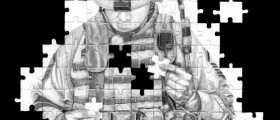
Dissociative identity disorder is a psychiatric condition described by state in which person displays several different identities and personalities. These distinct personalities are also know as alter egos or alters. What is interesting about this condition is that each of the personalities has its own pattern of interaction with the world, and its own model of perception. The disease is also known as the multiple personality disorder, and its prevalence in mentally ill populations dramatically differs in different societies. The highest rates are observed in Turkey, with 14%. The lowest rates are found in China, 0.4%. According to the statistics from 2006, the prevalence of dissociative identity disorder in the United States ranges between 6-10%. This condition often occurs together with some other personality disorders including avoidant personality disorder, self-defeating personality disorder, self-defeating personality disorder, schizotypal personality disorder and passive-aggressive personality disorder.
Causes of dissociative identity disorder
This severe condition is typically caused by excessive and unmanaged stress, traumatic past events, insufficient care during childhood, and general innate ability to dissociate memories or experiences from consciousness. In many cases, patients with this condition had experienced child abuse during their early and mid childhood. General theory is that severe sexual, physical, or psychological trauma in childhood makes individuals more vulnerable to the development of dissociative identity disorder. Most probably, the condition develops when the harmed child splits off the awareness and memory of the traumatic event to survive in the relationship. These memories and feelings buried into the subconsciousness are experienced later in life in a form of separate personality. Dissociation, observed in this mechanism, is actually a coping mechanism that occurs anytime later in life when the individual is faced with stressful situations.
Treatment for dissociative identity disorder
The main type of treatment for dissociative identity disorder is psychotherapy. This form of therapy, also mentioned as talk therapy, involves discussing problems and related issues with medical health provider. The goal is to help the patient understand the cause of the condition and learn new more productive ways of coping with stress. Sometimes, the therapist will use hypnosis, to help the patient remember the trauma that triggered dissociation. Psychotherapy is often very long and emotionally hard, but it delivers the best possible results. Other treatments may include creative art therapy, which helps people who have difficulty expressing their thoughts and feelings, or cognitive therapy, which is aimed to identify negative ideas and behaviors and replace them with more positive ones.







-Causes,-Symptoms,-Diagnosis-And-Treatment_f_280x120.jpg)









Your thoughts on this
Loading...